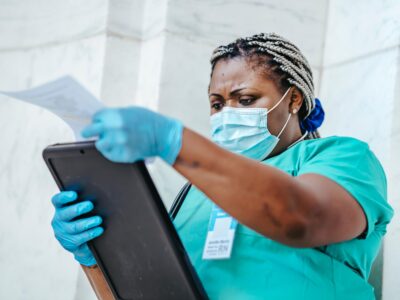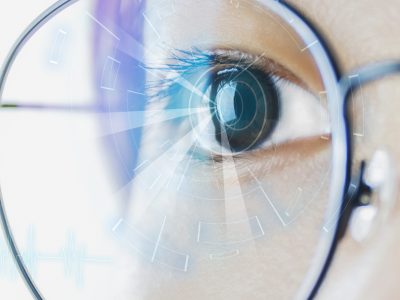As the COVID-19 pandemic rages on, the medical community continues to debate the idea of “herd immunity,” defined as the resistance to the spread of an infectious disease within a population that is based on pre-existing immunity of a high proportion of individuals as a result of previous infection or vaccination. With herd immunity, fewer people would have to worry about getting infected. If we achieve herd immunity, most people will already be immune, so, in theory, it could help us return to life before COVID-19.
Having a vaccine for the virus would be great, but most experts believe the drug won’t be widely available until the second quarter of 2021. Young and healthy people may even have to wait until 2022 to get vaccinated.
To reach herd immunity before a vaccine becomes available, some doctors have proposed the idea that young and healthy people should willingly expose themselves to the coronavirus, so more people will have pre-existing immunity. This is an extremely controversial idea that could put young people at risk. Scientists still aren’t sure if herd immunity to COVID-19 is even attainable. Let’s unpack this theory and separate fact from fiction.
Dueling Philosophies
As we get closer to winter and flu season, many countries, cities, and states may have to go back on lockdown to prevent the spread of the coronavirus. That means closing schools, businesses, and keeping people in their homes for several months at a time. However, reinstating these restrictions could be a tough sell in many parts of the U.S. and abroad.
There are currently two petitions from scientists making the rounds in the epidemiology community.
One, known as The Great Barrington Declaration, is spreading the idea that another round of lockdowns would do more harm than good. They say keeping these safety measures in place could cause “irreparable damage,” particularly among the underprivileged.
This includes “lower childhood vaccination rates, worsening cardiovascular disease outcomes, fewer cancer screenings and deteriorating mental health – leading to greater excess mortality in years to come, with the working class and younger members of society carrying the heaviest burden.” The group also says that “Keeping students out of school is a grave injustice.”
Instead of keeping people at home, the group says it’s ultimately best for young and healthy people to expose themselves to the virus while protecting the most vulnerable, so the population can build up immunity to the virus naturally.
The group writes:
“The most compassionate approach that balances the risks and benefits of reaching herd immunity, is to allow those who are at minimal risk of death to live their lives normally to build up immunity to the virus through natural infection, while better protecting those who are at highest risk. We call this Focused Protection.”
The other petition says the complete opposite.
The John Snow Memorandum is pushing back against this idea. They say recent lockdowns were instrumental in reducing the mortality rate of COVID-19 earlier in the year, even though they disrupted the economy, which had a substantial effect on both mental and physical health.
The group is fighting back against the notion that lockdowns do more harm than good, especially with a possible “second wave” of the virus right around the corner. They write, “Proponents [of the herd immunity approach] suggest this would lead to the development of infection-acquired population immunity in the low-risk population, which will eventually protect the vulnerable. This is a dangerous fallacy unsupported by scientific evidence.”
Furthermore, the John Snow Memorandum says that letting young people do whatever they want could be a recipe for disaster.
“Any pandemic management strategy relying upon immunity from natural infections for COVID-19 is flawed. Uncontrolled transmission in younger people risks significant morbidity and mortality across the whole population. In addition to the human cost, this would impact the workforce as a whole and overwhelm the ability of healthcare systems to provide acute and routine care.”
The group says the best way forward is to let governments impose additional restrictions until a vaccine becomes available, including lockdowns, if necessary, contact tracing, additional testing, and quarantine protocols for those that test positive.
Is “Herd Immunity” Attainable?
From a scientific perspective, the John Snow Memorandum is closer to fact than The Great Barrington Declaration.
Letting the virus run its course by letting the young and healthy to go back to life as normal while protecting those most at risk could lead to a catastrophic loss of human life without necessarily speeding up society’s return to normalcy.
Herd immunity may seem like the perfect solution to all our problems, but it’s never worked in the past. As Kristian Andersen, an immunologist at the Scripps Research Institute in La Jolla, California, says, “We have never successfully been able to do it before, and it will lead to unacceptable and unnecessary untold human death and suffering.”
Scientists also argue that herd immunity wouldn’t necessarily prevent future outbreaks. COVID-19 is still a relatively new disease and long-term effects are known. It’s also not clear how many people would have to be immune for this approach to work. Some people may lose their immunity to the virus over time, even though they were infected previously, which means herd immunity may not be attainable after all.
We know that young and healthy people are much more likely to survive COVID-19, but that doesn’t mean they will be immune to the disease. If we let young people go about their business as usual, the healthcare community would likely see a sharp rise in demand for services. Many of these young people would still have to get tested. They could also pass it on to their loved ones without realizing it, especially with school out of session and many young people living at home with their parents.
Looking at the science, herd immunity isn’t supposed to replace a vaccine. We will likely need a working drug before life can go back to normal. Overall, society will be better off waiting for an effective vaccine instead of rushing into a situation that we may not be able to control.

















